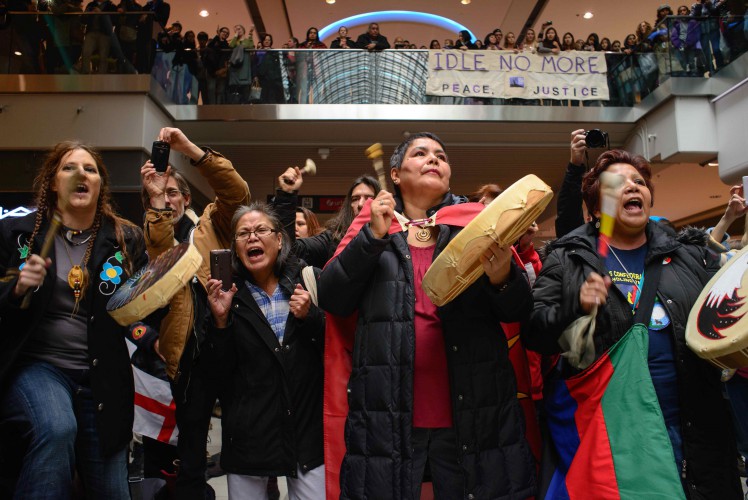I’m excited to share with you all a new article of mine that has come out
in the most recent issue of Curriculum Inquiry, titled Educating for Cultural Citizenship: Reframing the Goals
of Arts Education. This post summarizes some of the main ideas
in the article which you can find here. If you don’t have access, I’m told the
first fifty people to visit this link can download it for free.
What does it mean to be part of a society? What are the responsibilities, roles, and rights of community members? How does one become a “good” citizen? These questions are central to the field of civic education, which prepares individuals with the skills and knowledge they need to be active and responsible participants in civic life. Those of us in the field of arts education, I believe, should be asking similar questions.
Citizenship, after all, is about more than political rights and responsibilities. It is also a matter of culture. You may be formally recognized as a citizen of a country, but still have your cultural perspectives and practices marginalized, leading to second-class citizenship. You may have access to the ballot box but not the right, enshrined in the Universal Declaration of Human Rights, to “freely participate in the cultural life of the community.” Moreover, artistic and cultural practices — from hip-hop to documentary film to traditional ceremony — have a vital political dimension, and can serve as their own form of civic engagement.
Arts education is about more than transmitting the skills and knowledge needed to create artistic works. It is also a process of developing young people’s orientations towards the arts — teaching them about their roles and responsibilities as artists and/or audience members. Arts education offers an entryway for young people into an important aspect of cultural life. One useful way to think about arts education, then, is as a process of developing cultural citizenship, the the right and capacity of people to develop and pass on diverse cultural traditions and identities while participating effectively in a shared cultural and political arena. Arts educators are helping youth to acquire skills, knowledge, and attitudes that will prepare them to be competent and responsible members of their cultural communities. In other words, arts education is a form of civic education.
As scholars like Westheimer and Kahne have demonstrated, not all civic education efforts share the same vision of what it means to be a good citizen. The same is true for arts education — different types of arts education promote different types of cultural citizenship.
Some arts programs are designed to develop what we might call informed cultural citizens. The informed cultural citizen has the capacity to understand, appreciate, and critique works of art, and is confident in her right to attend museums, plays, concerts, and other artistic fora without feeling alienated or excluded. She is not a passive consumer of whatever media comes her way; she is engaged in choosing, critiquing, and discussing art, thus involving her in the evolution of artistic tastes. Programs promoting informed cultural citizenship can be found in the realms of aesthetic education, arts appreciation, and discipline based arts education, among other places.
Other arts programs are designed to develop participatory cultural citizens. The participatory cultural citizen is involved in producing, remixing, and sharing original artistic works, even if she does not see herself as an artist. She has a strong connection to her own cultural heritage, along with the freedom to explore new forms of expression and to share in cross-cultural exchange. She sees sees the arts as a way to connect with and understand the broader communities of which she is a part. She does not see firm divides between “artist” and “audience,” and is resistant to hierarchies among art forms. The development of participatory cultural citizens has long been a goal, for example, of many educators and artists in the community-based arts movements that have swept the US over the past century.
Still other arts education programs are designed to develop justice-oriented cultural citizens. The justice-oriented cultural citizen can critically analyze the ways that the arts are implicated in processes of oppression and resistance. She actively values and promotes cultural perspectives and narratives that are kept out of mainstream discourse, while maintaining a strong sense of cultural pride and identity. The justice-oriented cultural citizen feels a responsibility to use her art to improve her community and directly confront injustice, while understanding that social change must be a collective effort utilizing multiple forms of cultural and social action. Programs promoting justice-oriented cultural citizenship can be found in the fields of social justice arts education, community-based arts, youth participatory action research, youth media, youth organizing, critical media literacy, hip-hop education, community cultural development, and cultural organizing, among others.
This line of thinking suggests that we as arts educators should begin asking ourselves questions like those with which I began this post. What kinds of cultural citizens are we educating? What are we teaching about who can be an artist, and what the arts are for? How might education in the arts support young people as they seek to be recognized as full citizens? Such questions can help us to be more conscious of our influence on young people as members of overlapping local, national, and international communities, and of the role of arts education in an aspiring democracy.



